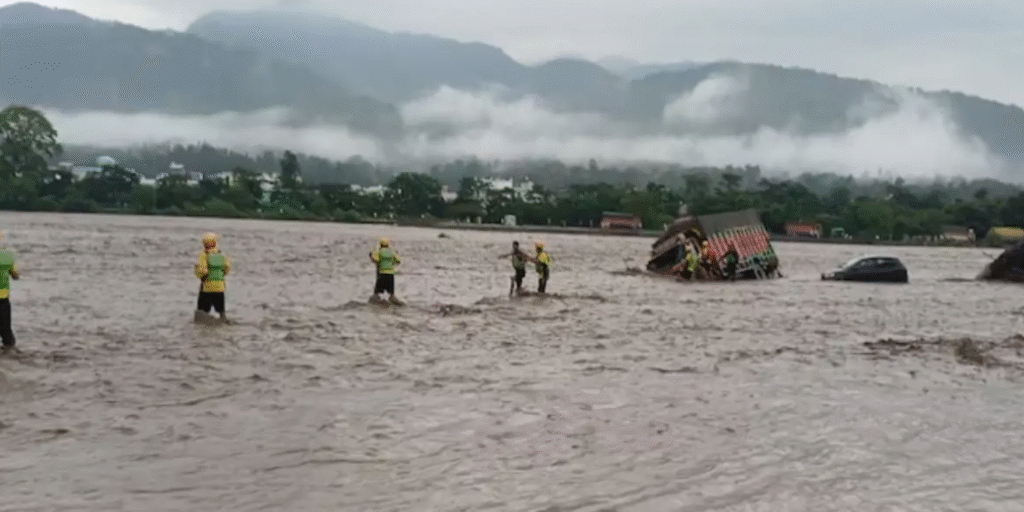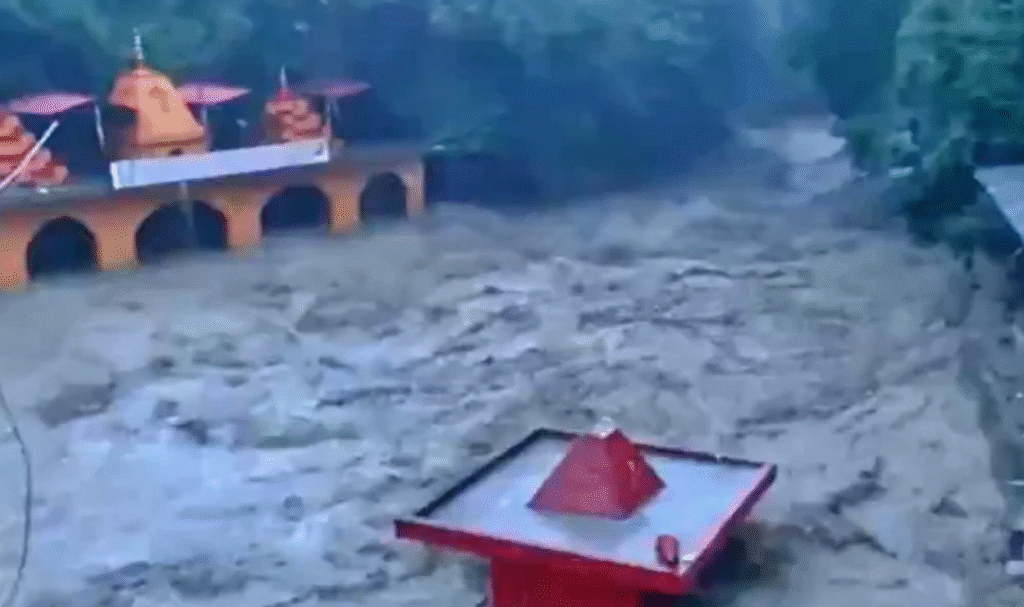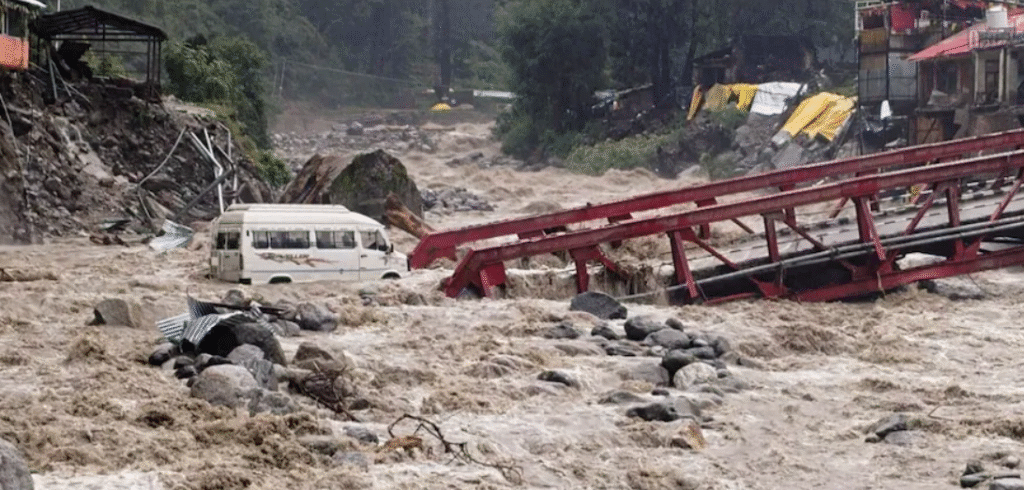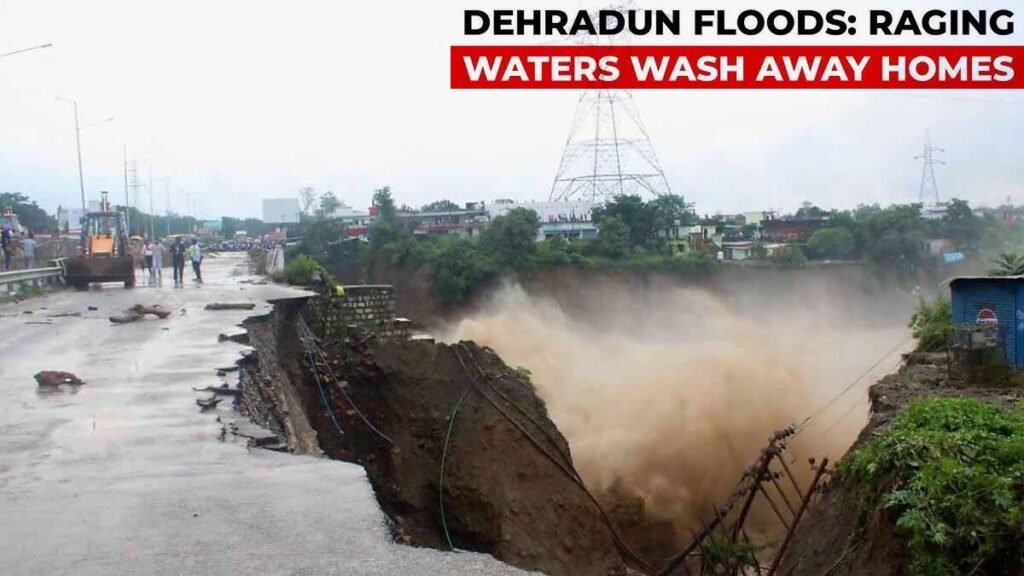Dehradun reels under one of the worst weather disasters in recent memory, as a sudden cloudburst exposes the fragile balance between Himalayan ecology and unregulated urban growth.
On the night of September 15, 2025, Dehradun went to bed under grey skies. By dawn on September 16, the state capital of Uttarakhand was unrecognizable. A sudden cloudburst, accompanied by hours of torrential rain, transformed streets into rivers and slopes into cascading mudflows. Vehicles were tossed around like toys, ground floors of houses disappeared under water, and landslides severed links to nearby villages.

By midday, officials confirmed what residents already knew — this was not an ordinary spell of rain. At least 15 lives had been lost across the state, most of them in and around Dehradun. The neighborhoods of Nanda ki Choki and Jhajra, perched on fragile terrain and dotted with unplanned housing, were among the worst affected. Here, swollen rivulets broke their banks, rushing into homes and carrying away debris, leaving behind scenes of devastation.
Why Cloudbursts Hit Hard in the Himalayas
Cloudbursts are not new to the Himalayan belt, but the way they strike — suddenly, violently, and over small areas — makes them uniquely destructive. In Dehradun, residents described it as a “rain bomb”: water fell in such concentrated volume that drains, streams, and slopes simply gave way.

The science explains the shock. Moist air from the plains, when forced upward by steep mountains, cools rapidly and condenses into giant thunderclouds. These clouds, held aloft by strong updrafts, hoard enormous amounts of moisture. At a breaking point, they release the load in a furious burst, often dumping more than 100 millimeters of rain within an hour. For narrow valleys and unstable hillsides, this is catastrophic.
Fragile Mountains, Greater Risks
The Himalayas themselves are part of the story. Being geologically young, they consist of loose soil and unstable slopes. A sudden deluge weakens the terrain, triggering landslides that barrel downhill. The water, unable to seep into steep ground, gathers into torrents that mix with mud and rock, turning into destructive flash floods.
In Dehradun’s case, this natural fragility collided with man-made risks. Over the past two decades, the city has expanded recklessly. Residential colonies now sit on old riverbeds, and commercial hubs push into areas that once acted as natural drainage. In Nanda ki Choki and Jhajra, unchecked construction has narrowed water channels and stripped slopes of vegetation. When the cloudburst struck, these choices turned vulnerable zones into death traps.
When Development Meets Disaster
Experts have long warned that Uttarakhand’s push for rapid growth has come at a steep ecological cost. Roads, hotels, and dams have been built with little regard for carrying capacity. The Kedarnath disaster of 2013, the Chamoli glacier burst of 2021, and now Dehradun’s cloudburst show a repeated pattern: nature’s fury amplified by poor planning.

In Dehradun, residents told officials that encroachments on drainage paths had worsened flooding. Once-quiet streams like the Bindal and Rispana rivers swelled with ferocity, carrying mud and debris into densely populated areas. The fragile mountain city, designed neither for such volumes of water nor for such a surge in population, simply crumbled under pressure.
The Human Face of the Tragedy
For residents of Jhajra, the morning of September 16 began with cries for help. Families were trapped on rooftops as floodwaters gushed through narrow lanes. In Nanda ki Choki, locals formed human chains to rescue neighbors as mudflow invaded homes. Relief teams struggled to enter because access roads were blocked by landslides.
Hospitals across Dehradun reported a rush of patients, some with injuries from collapsing walls, others with waterborne infections that follow floods. Power outages and communication breakdowns deepened the chaos.
Lessons Unlearned?
Every Himalayan disaster leaves behind a familiar question: can this be prevented, or at least managed better? Cloudbursts cannot be stopped — they are part of the mountain climate. But their impact can be reduced. Experts argue for stricter zoning laws, bans on construction in high-risk areas, and restoring natural drainage systems. Climate scientists also point to global warming as a trigger, with warmer air holding more moisture and releasing it in extreme bursts.

Yet enforcement on the ground remains weak. In Dehradun, warnings about construction along the Rispana and Bindal rivers have circulated for years, but little has changed. The events of September 15–16 suggest that until policy matches scientific advice, disasters will keep repeating.
A Wake-Up Call for Himalayan Cities
The Dehradun cloudburst was more than just a weather event. It was a mirror held up to the choices made by a city growing faster than it can sustain. Natural hazards are inevitable in the Himalayas, but human-made vulnerabilities determine how deadly they become.
For Dehradun, the path ahead is clear: respect the limits of the mountains, or risk seeing them collapse under the weight of rain and recklessness.


